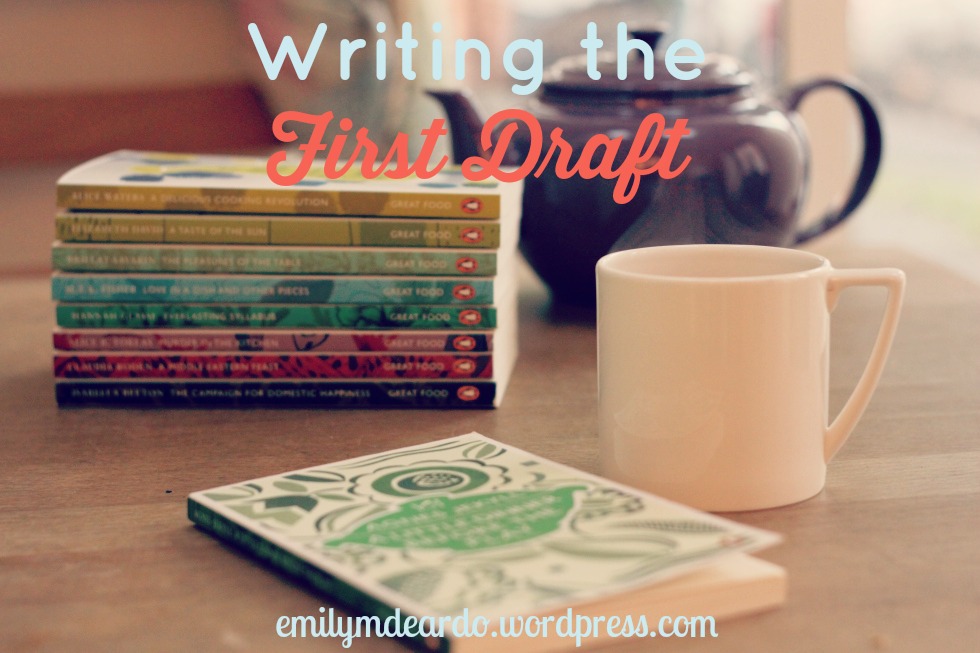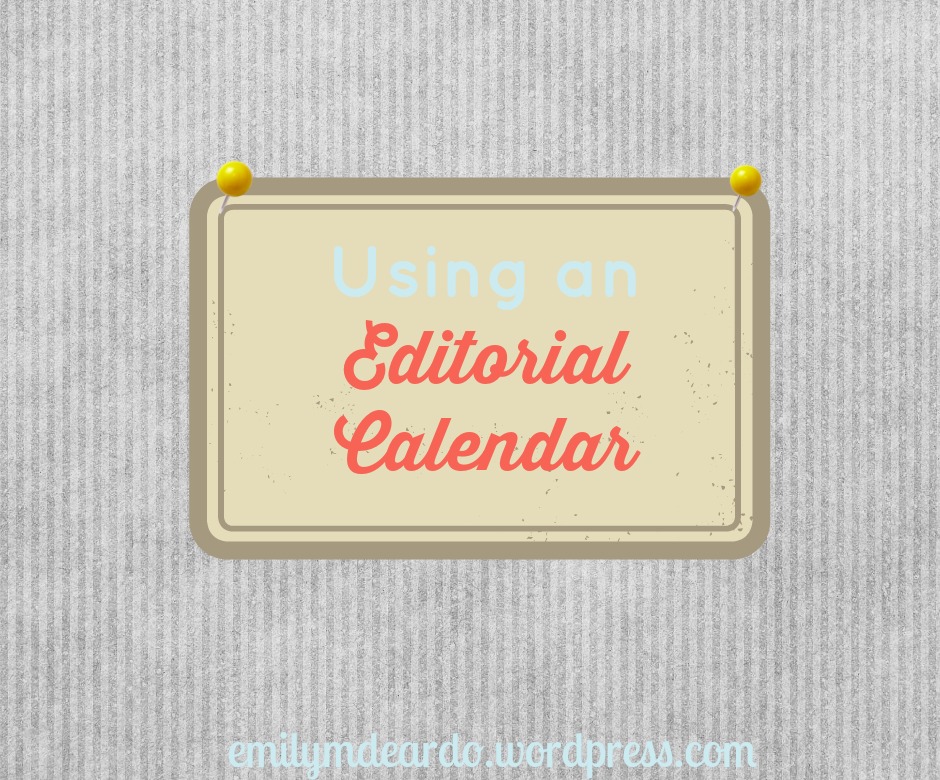
Before I used an editorial calendar, my blogging habits were pretty hit or miss. Some weeks you'd have content coming out of my ears, and some weeks, total radio silence. That's not helpful on a couple fronts--for you, the reader, I hope that you want regular content because you like to read what I write. (If you don't, don't tell me. ;-)) Second, writing, like anything else, requires regular practice and time devoted to it. If I only write when I feel like it, then I'm probably not really dedicated to the craft of writing. (You could say this about anything, really--prayer, gardening, sports, yoga, etc. If you only do it when you feel like it, it's probably going to be a sporadic practice.)
When I was doing my social media overhaul, Cristina had the brilliant suggestion of an editorial calendar, and I think it's changed my writing for the better. It's helpful in several ways:
- I can track outside writing projects (like my Real Housekeeping work) and make sure I don't miss deadlines.
- I can see, at a glance, what's coming up for the next few weeks, and schedule posts appropriately--if I'm going on vacation, I can still have content ready to go, if I want.
- I have to dedicate time to writing at least a few times a week, so I can have these posts ready to go.
- It helps me prevent feast or famine blogging--I can spread ideas out over a number of days, so there's not a glut of pieces on day and then nothing for days after.
I use trello, and I really like the format, because it's easy to use, clean, and very user-friendly.
So here's my current editorial calendar:

The left-most column is where I keep a running tally of ideas. These are either scheduled--as in, I think I have a place for them on the calendar--or not (just yet). Next is researching: this is for posts that might take longer (such as posts where I'm talking about theology) and need to look up necessary documents--hence, research.
Middle column is writing, and this is where things go into the hopper, if you will. I try to have two weeks' worth of material going at any one time. You can see, in fact, that this piece is at the bottom of the writing list, meaning it's in the on-deck circle, to steal from baseball. (I took the photo the day I wrote this.)
The colors mean different things: the blue means it's a post for this site, whereas the purple means it's going to the blog (which you follow, right?) Any other colors are indicative of the category of writing, which is really just for me.
After writing is editing and graphics. That means I make the pretty pictures that top these articles, and give all the pieces a read-through to scan for errors.
When all that is done, the card moves into the "completed" column--yay! I generally keep things here for a week, so I can get an overview of what went up where over the past week. Then the cards are archived.
Another great trello feature is the calendar page:
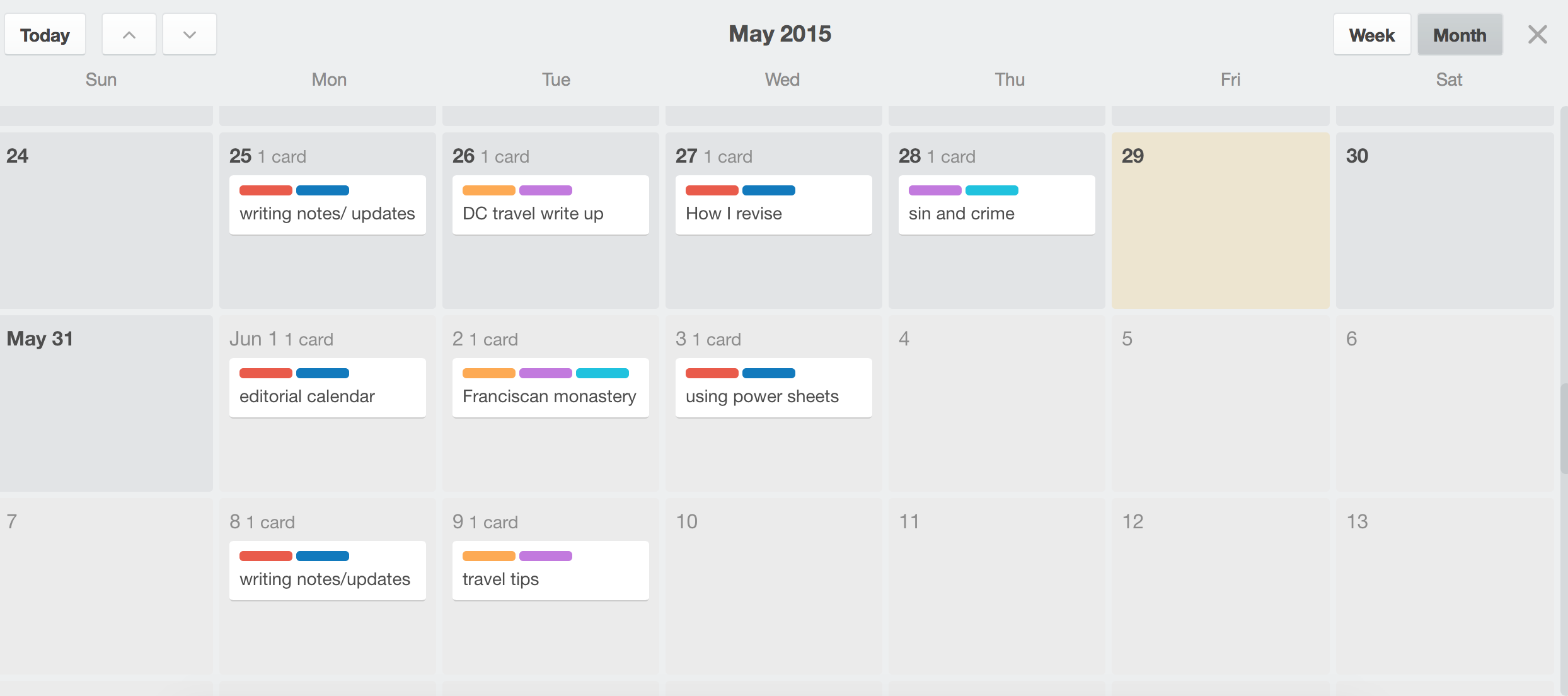
This is actually one of my favorite features, because I can see what's going up when in a big spread, and I can re-arrange cards at will. This is great for my future planning, especially for when I'm going on vacation, or I want to see things at a glance. The only problem I have here is that when a card is archived, it's also removed from this page, and that irritates me, but, such is life!
I also have a trello board for my big writing projects, but that's set up differently. Maybe I'll show you that one some other time.
So not only does my board provide organizational nirvana, but it also provides accountability. The content isn't going to write itself! Usually early in the week I do the calendar sorting and resorting, to figure out what's going up when, and then I work on blog posts throughout the week, along with my other writing.
Things that don't get scheduled are things like Yarn Alongs and Seven Quick Takes on the blog, because those are running features that don't need quite as much planning as from-scratch blogging does. I do keep certain features as cards, though, so I don't forget, like the biweekly writing updates--I'm also going to do those for the Jane Austen Re-Read.
I know that the idea of editorial calendars is used in a lot of different industries--I know that IT guys use a version of this (not trello), but something like this to track their software development. Have you used an editorial calendar in your work? Would you like to?


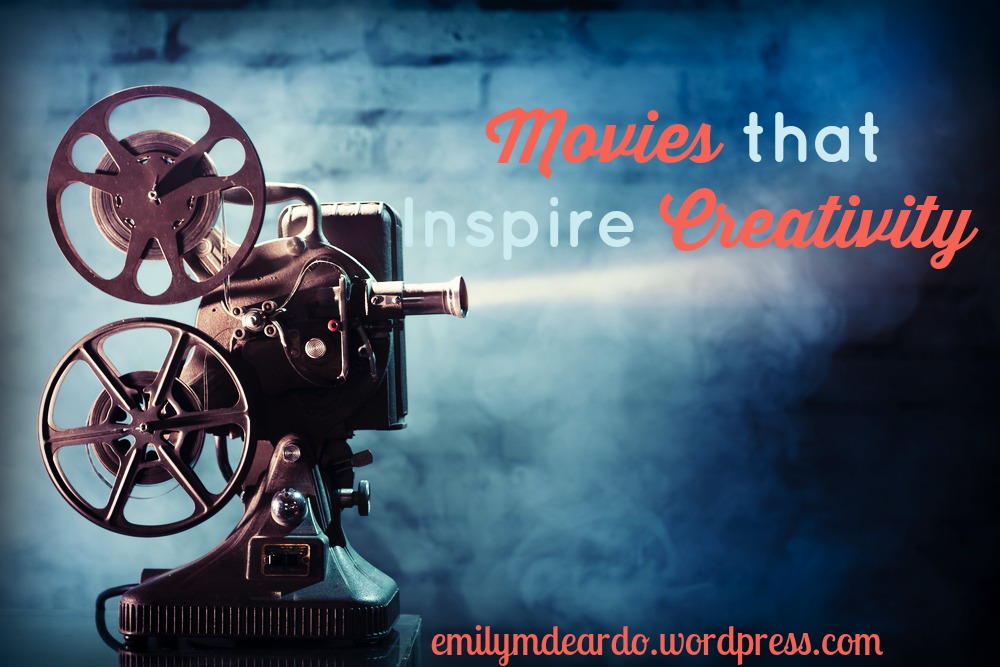



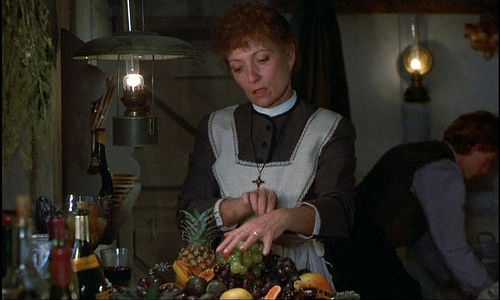

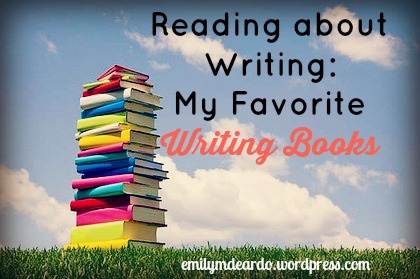

 Escaping Into the Open: The Art of Writing True, by Elizabeth Berg. This is my favorite book about writing. Berg gives a ton of unusual prompts and activities to really inspire creativity, and she writes about her own writing process and inspirations. I've got this book post-it marked, underlined, and bookmarked in many different ways.
Escaping Into the Open: The Art of Writing True, by Elizabeth Berg. This is my favorite book about writing. Berg gives a ton of unusual prompts and activities to really inspire creativity, and she writes about her own writing process and inspirations. I've got this book post-it marked, underlined, and bookmarked in many different ways.









